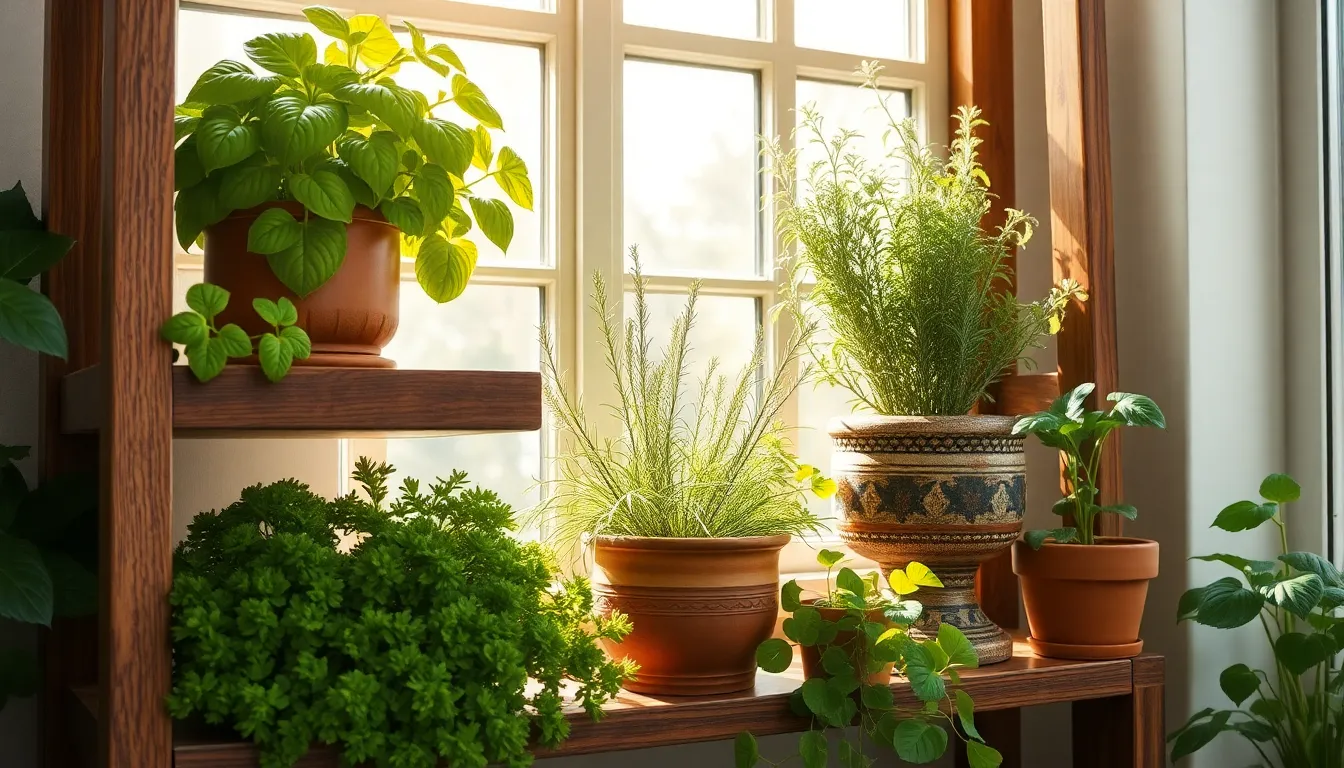Welcome to the aromatic world of indoor herb gardening, where both beginners and seasoned green thumbs can cultivate a lush oasis right on their windowsills! Whether you’re starting your very first plant or expanding a thriving collection, growing herbs indoors offers a delightful blend of challenges and rewards that will keep your gardening spirit soaring.
Imagine the satisfaction of snipping fresh basil for your homemade pizza or brewing a calming chamomile tea, all from herbs nurtured in the comfort of your home. This guide is your key to unlocking these everyday joys, providing practical insights and expert tips to ensure your indoor garden flourishes with vibrant, healthy herbs. As you dive into these pages, you’ll gain the confidence and know-how to transform any indoor space into a thriving herb haven, bringing a touch of nature’s magic into your daily life.
Choose Sunlit Windowsill Locations

When choosing a location for your indoor herb garden, ensure the windowsill receives at least six hours of sunlight daily. South-facing windows are typically ideal, as they offer the most consistent and abundant light.
For those without a south-facing window, consider using grow lights to supplement natural light. Position these lights about 6 inches above your herbs, and set a timer to mimic the natural daylight cycle.
It’s important to rotate your herb pots every few days to ensure all sides receive equal sunlight, promoting even growth. This simple step can prevent your plants from leaning towards the light and becoming lopsided.
Beginners might start with easy-to-grow varieties like basil, mint, or parsley, which thrive in sunny conditions. Ensure you use well-draining soil, such as a potting mix with added perlite, to keep the roots healthy and prevent waterlogging.
Use Potting Mix with Good Drainage
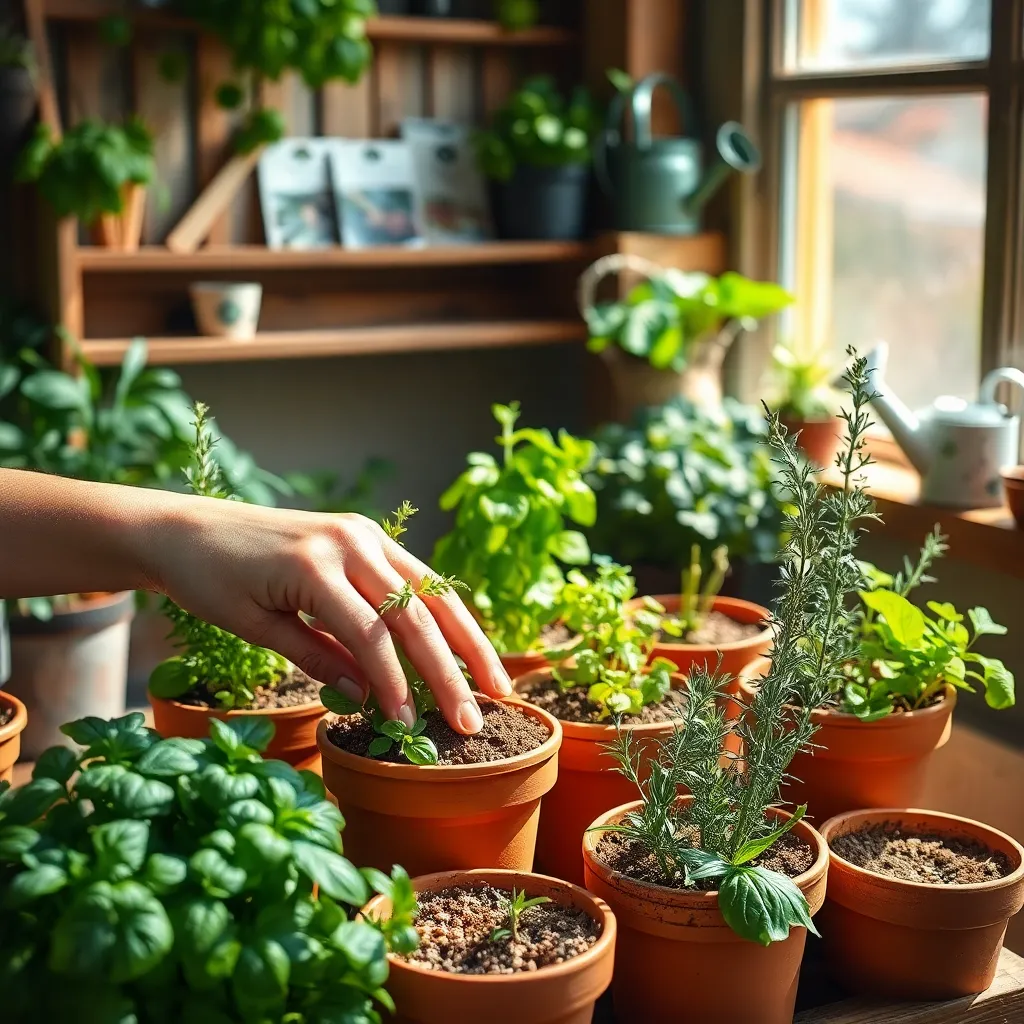
When growing herbs indoors, using a potting mix with good drainage is essential for healthy plants. Herbs generally dislike sitting in water, and a well-draining mix helps prevent root rot and other moisture-related issues.
For optimal results, choose a potting mix specifically formulated for herbs or container gardening. Such mixes often contain ingredients like perlite or vermiculite, which improve aeration and drainage, allowing roots to breathe more easily.
Consider adding a layer of coarse sand or small pebbles at the bottom of your pots for extra drainage. This simple step can help excess water escape more efficiently and keep your herbs thriving.
To further enhance drainage, ensure your pots have adequate drainage holes at the bottom. Pots without these holes may cause water to pool, leading to overly wet conditions that herbs generally do not tolerate well.
Water Herbs Consistently but Sparingly
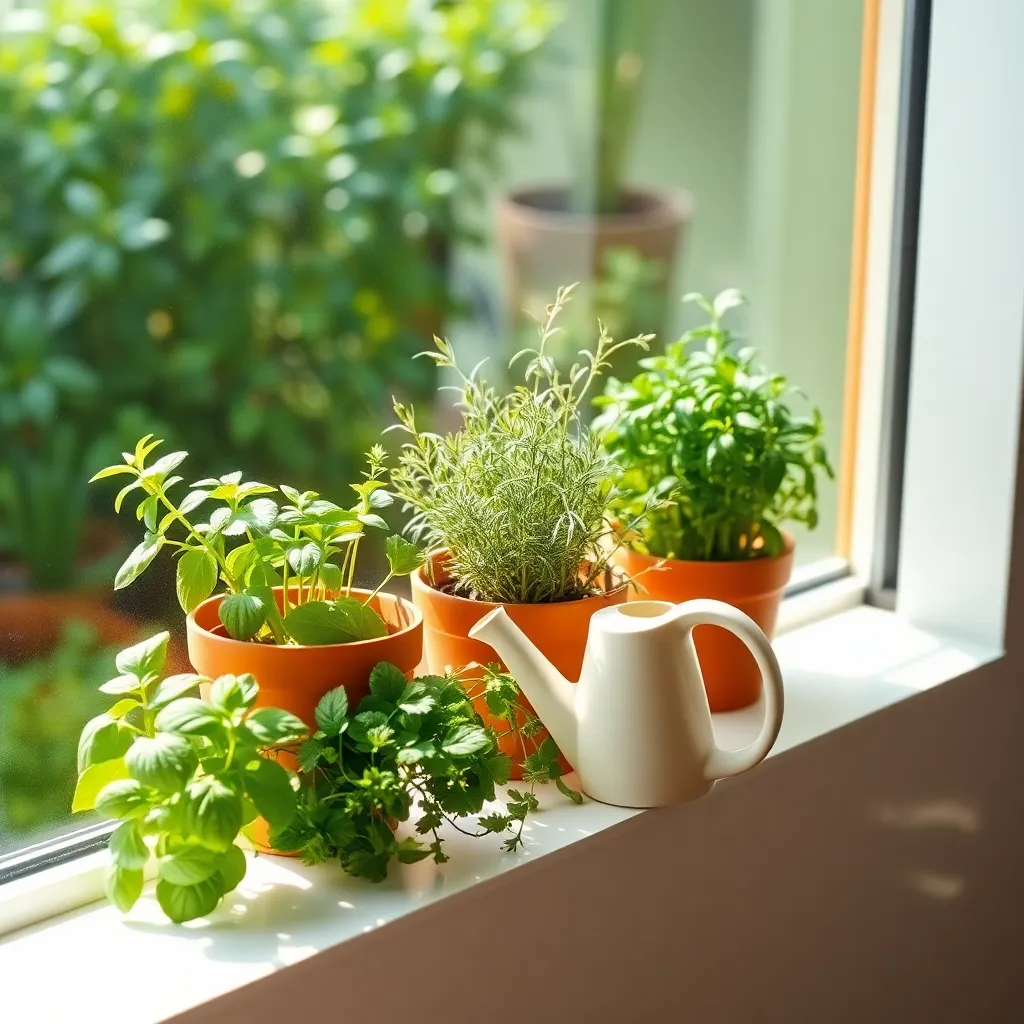
Watering herbs consistently but sparingly is crucial to their health and growth. Most herbs prefer to dry out a bit between waterings, so it’s important to check the soil moisture regularly.
Insert your finger about an inch into the soil; if it feels dry, it’s time to water. This method helps prevent over-watering, which can lead to root rot and other issues.
Using a pot with drainage holes is essential, as it allows excess water to escape. This prevents the roots from sitting in water, which herbs generally dislike.
For those looking to enhance their watering routine, consider using a moisture meter. This tool offers precise readings and can be particularly helpful for beginners unsure about soil moisture levels.
Finally, remember that different herbs may have slightly varying needs. For instance, Mediterranean herbs like rosemary and thyme thrive on less frequent watering compared to basil, which prefers more consistent moisture.
Rotate Pots for Even Growth
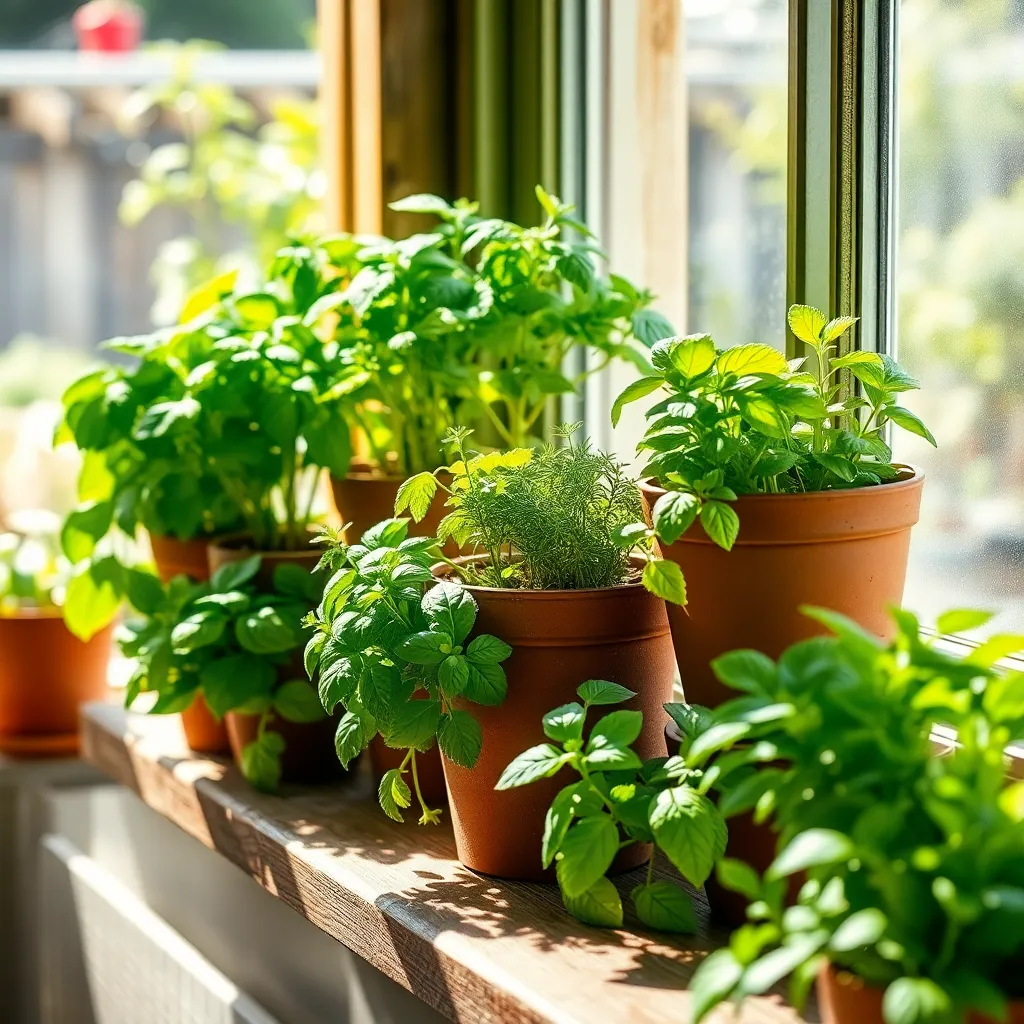
To ensure your indoor herbs grow evenly, it’s important to rotate their pots regularly. Doing so prevents them from leaning towards the light, which can cause uneven growth and weaker stems.
Place your herb pots in a location where they receive ample sunlight, such as near a south-facing window. However, remember to turn the pots slightly every few days to keep the plants growing straight and strong.
In addition to rotating your pots, consider using a grow light if natural light is insufficient. This can be particularly useful during the shorter days of winter, providing consistent light and promoting balanced growth.
For those looking to optimize their indoor herb garden further, pay attention to the type of pot you use. Pots with a smooth surface make rotation easier, and using well-draining soil, such as a mix of potting soil and perlite, helps maintain healthy root development.
Prune Regularly to Encourage Bushiness
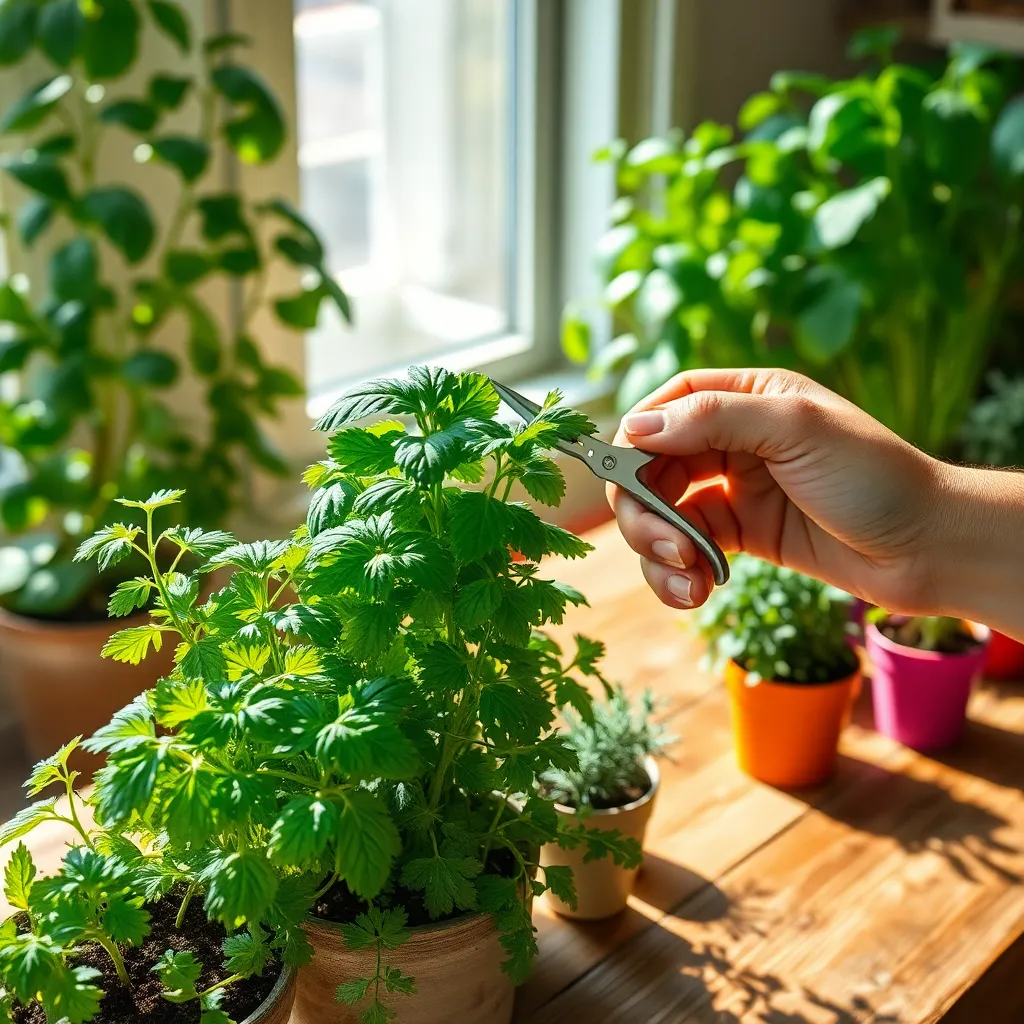
Pruning is a crucial technique to encourage bushiness in indoor herbs, ensuring they remain lush and productive. Regular trimming not only keeps your plants tidy but also promotes new growth, making your herbs fuller and healthier.
To start, use a sharp pair of scissors or pruning shears to cut just above a leaf node, which is a small bump where leaves emerge from the stem. This cut signals the plant to produce two new stems in place of the one removed, effectively doubling your potential harvest.
For beginner gardeners, a simple rule is to prune about one-third of the plant at a time, which helps avoid stressing the plant. More experienced gardeners might experiment with advanced techniques like pinching back the tips more frequently to promote denser foliage.
Herbs like basil, mint, and oregano particularly benefit from regular pruning as they are naturally inclined to become leggy if left unchecked. In addition to pruning, ensure your herbs are potted in well-draining soil, such as a mix of potting soil and perlite, to support healthy growth.
Remember to water your herbs thoroughly but infrequently, allowing the top inch of soil to dry out between waterings. This practice, combined with consistent pruning, will result in robust, bushy plants that are a joy to harvest and use in your culinary creations.
Conclusion: Growing Success with These Plants
In nurturing the delicate balance of relationships, the insights gleaned from the art of indoor herb gardening offer valuable lessons. First, understand the importance of nurturing each other’s growth, much like providing your herbs with sufficient sunlight. Second, establish strong roots through effective communication, akin to ensuring your plants have a solid foundation. Third, remember the significance of regular care, paralleling the need for consistent attention in relationships. Fourth, embrace patience and adaptability, as both herbs and relationships require time and flexibility to flourish. Lastly, celebrate small victories, whether it’s a sprouting basil leaf or a partner’s achievement.
Now, take immediate action by identifying one small step to nurture your relationship today—whether it’s a heartfelt conversation or planning a shared activity. As you embark on this journey of growth, bookmark this article to remind yourself of these nurturing principles whenever you need a refresher.
Looking ahead, the seeds of understanding and care you plant today can blossom into a thriving relationship garden tomorrow. Embrace these insights, and watch your relationships grow with resilience and love. Save this article as your guide to cultivating meaningful connections, and let your relationship success story unfold beautifully.

